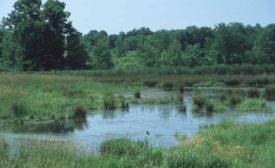Articles by Pam Hunter McFarland
Environment
Trump Administration Rolls Back 2015 Clean Water Rule
Action repeals Obama-era WOTUS regs that determined Clean Water Act permitting requirements
Read More
The latest news and information
#1 Source for Construction News, Data, Rankings, Analysis, and Commentary
JOIN ENR UNLIMITEDCopyright ©2025. All Rights Reserved BNP Media.
Design, CMS, Hosting & Web Development :: ePublishing








